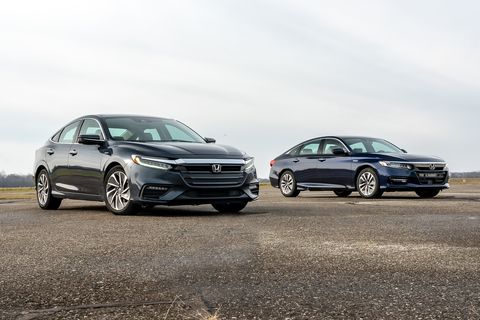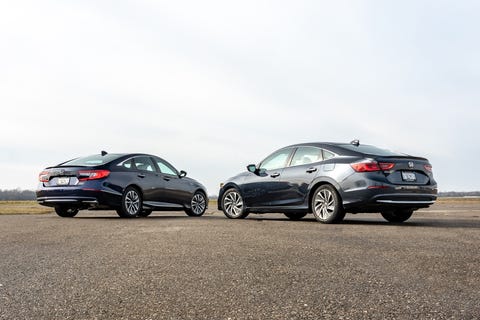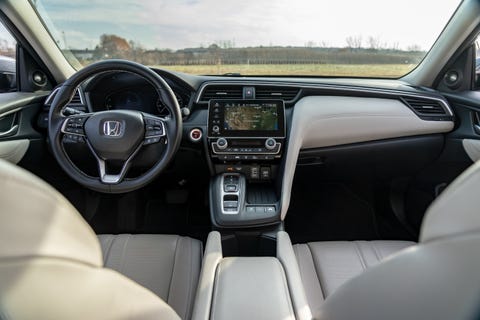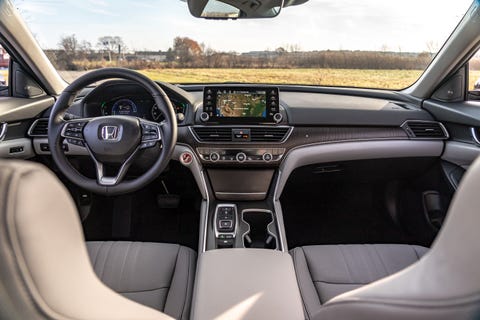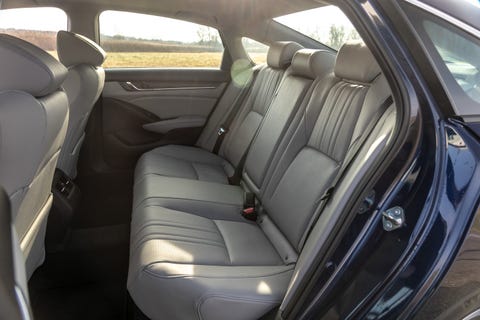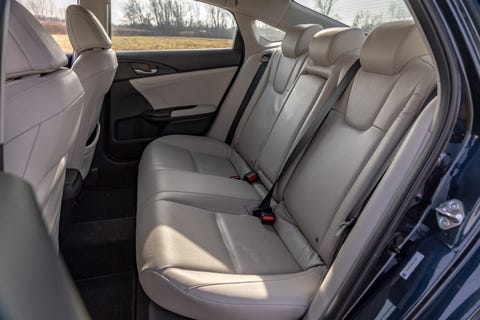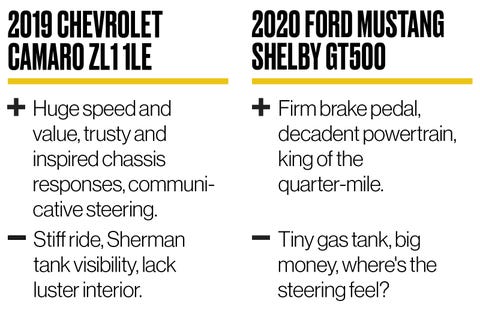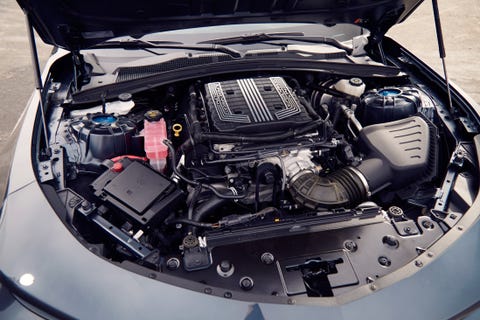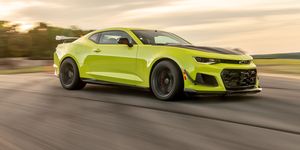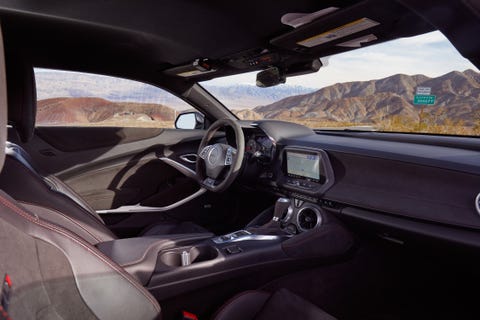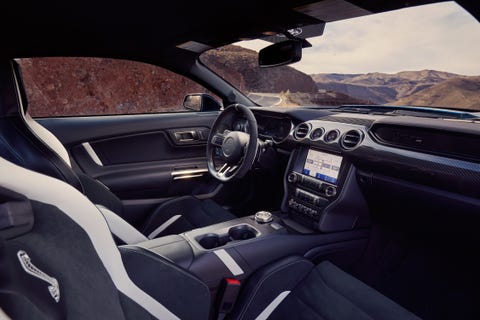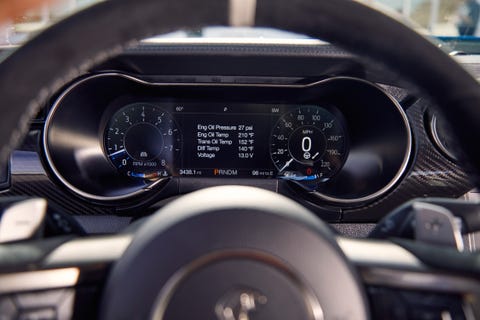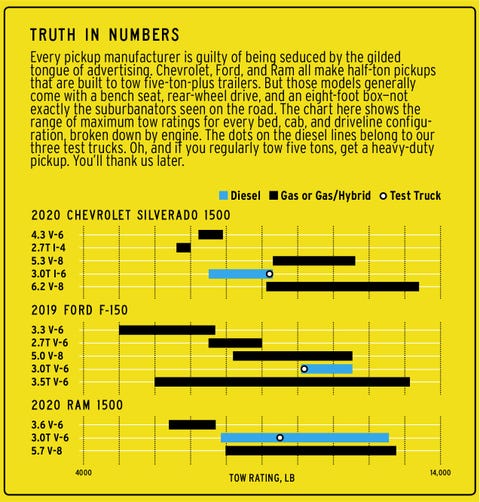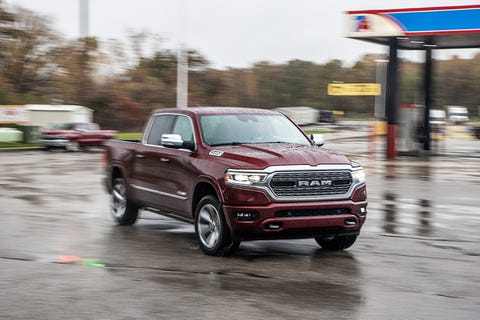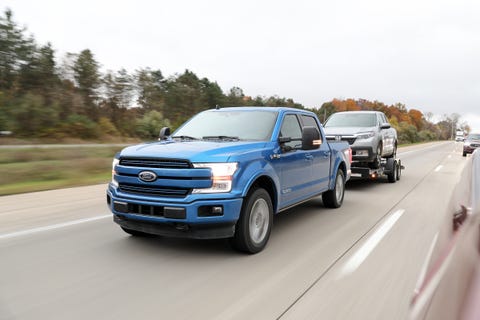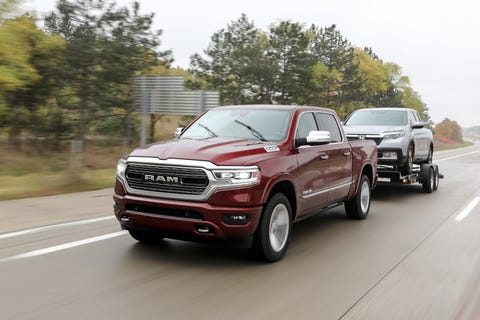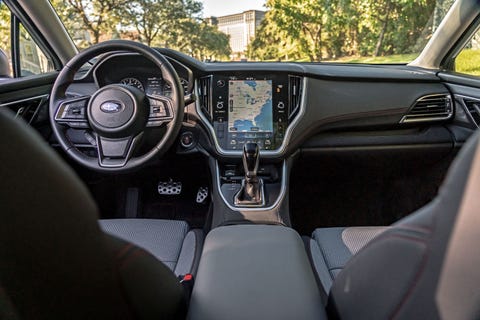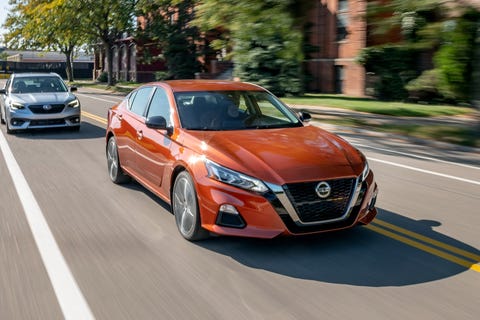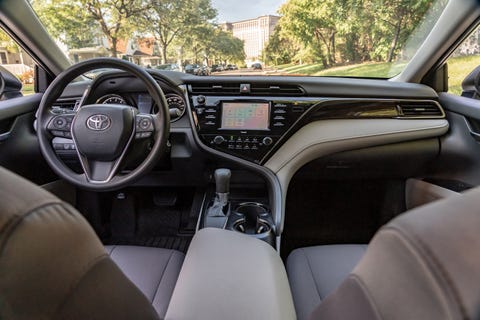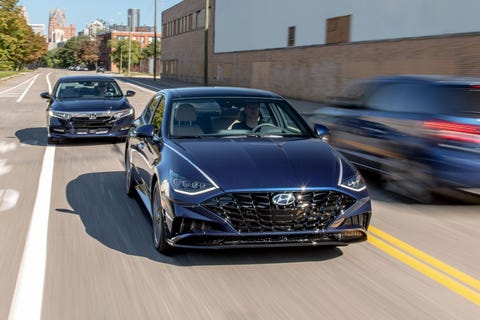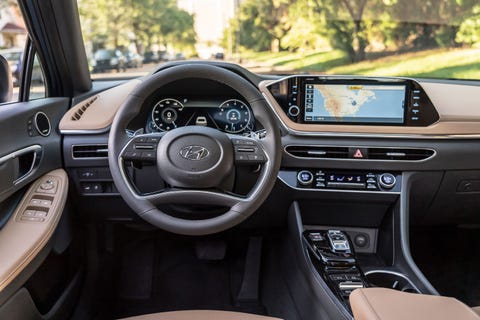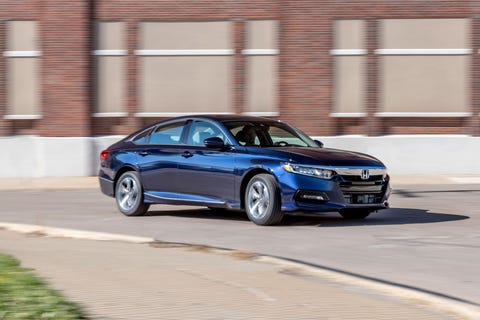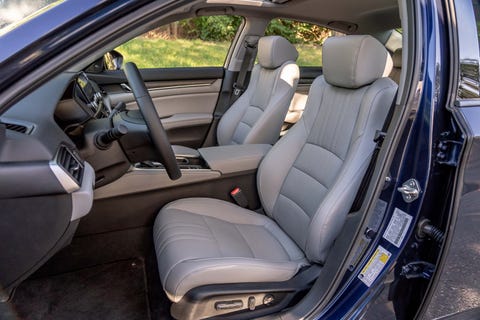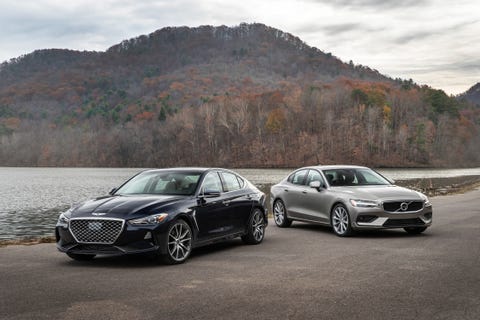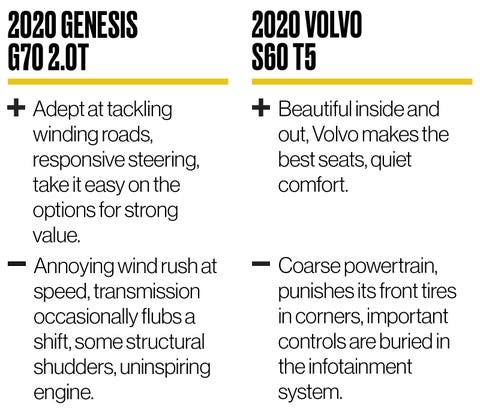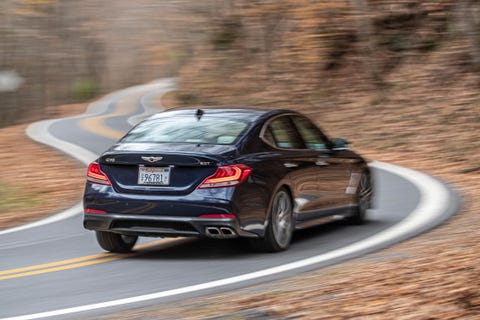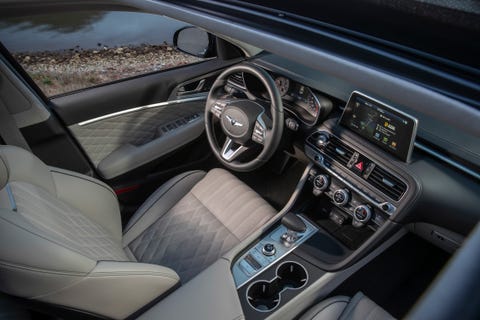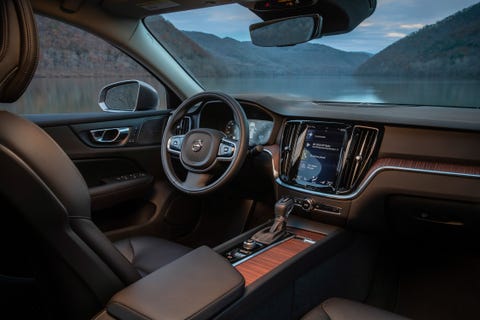
2019 BMW 3-Series vs. 2019 Alfa Romeo Giulia: Which Sports Sedan Packs More Excellence?
By
15:44

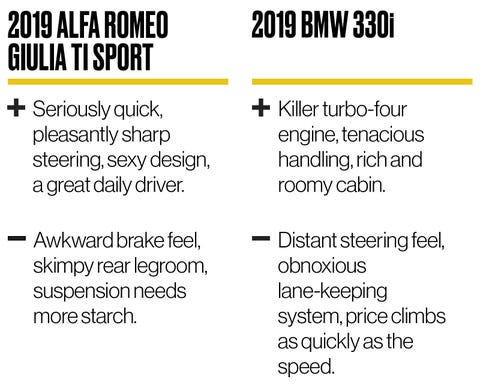
Cut to the present, and BMW and Alfa Romeo both offer highly competent, entry-level compact sports sedans—the BMW 3-series and Alfa Romeo Giulia—that address that same enthusiast dilemma. But which car comes closest to delivering driving nirvana while satisfying the practical requirements of daily life—all at a halfway reasonable price?
Face Off
The seventh-generation 3-series was introduced for 2019. The 330i is the volume model and entry point for the lineup, but it's by no means bereft of capability or equipment. Its standard engine is a 255-hp turbocharged 2.0-liter inline-four mated to ZF's eight-speed automatic transmission driving the rear wheels. All-wheel drive is optional, but our example did without it. Our $59,920 test car was packed with a stout $18,675 in options, some of which are mandatory when you order the all-important $2450 Track Handling package (stouter brakes and an electronically controlled limited-slip differential). Ticking that box also requires getting the $700 adaptive dampers and the $5000 M Sport package, which adds a number of features, but most important for performance is the set of 19-inch wheels wrapped with summer tires.
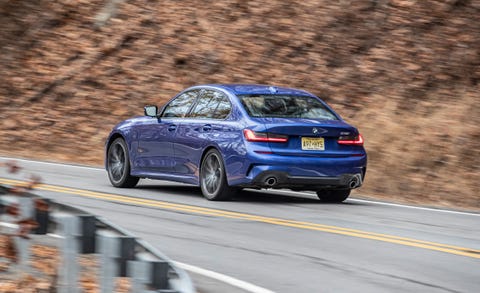
For this one-on-one test, we chose the four-cylinder Giulia TI Sport, which lines up almost perfectly with the 330i. Like the Bimmer, the Alfa is powered by a turbocharged 2.0-liter inline-four, but it shames the BMW's output by producing a hefty 280 horsepower. The Alfa's engine also asserts its power through a ZF-supplied eight-speed automatic and sends it to the rear wheels. Our $52,240 test car was optioned almost as comprehensively as the 3-series. Its most important extra is the TI Sport Performance package, which adds adaptive dampers, a limited-slip differential, and 19-inch summer tires. For the 330i to match the Alfa's price, it would have to give up much of its optional equipment.
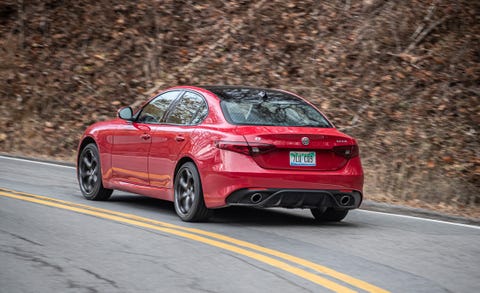
On the Road
The Alfa drives with a feathery lightness that brings to mind a ballet dancer. Its ultraquick steering slices into corners and executes lane changes with distinct immediacy. Its ride is deftly supple over large bumps. Its engine growls quietly, pulls strongly down low, and delivers deceptively quick acceleration. It ripped to 60 mph in just 4.6 seconds, an impressive half-second quicker than the Bimmer. In normal driving the Giulia is a responsive, refined partner and effortless highway cruiser. The only dynamic annoyance is its electrohydraulic brakes, which are jerky at low speeds, and the pedal feels as if a wet sponge is sitting on top of it.
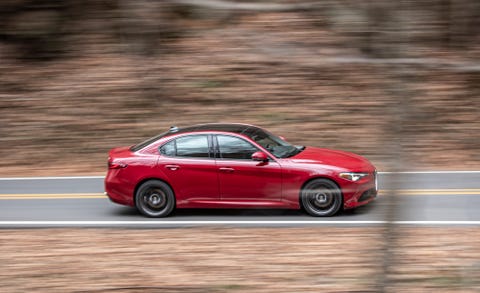

On the Road
The Alfa drives with a feathery lightness that brings to mind a ballet dancer. Its ultraquick steering slices into corners and executes lane changes with distinct immediacy. Its ride is deftly supple over large bumps. Its engine growls quietly, pulls strongly down low, and delivers deceptively quick acceleration. It ripped to 60 mph in just 4.6 seconds, an impressive half-second quicker than the Bimmer. In normal driving the Giulia is a responsive, refined partner and effortless highway cruiser. The only dynamic annoyance is its electrohydraulic brakes, which are jerky at low speeds, and the pedal feels as if a wet sponge is sitting on top of it.

But ask the Alfa to run hard on tight two-lanes, something we did with these cars for a couple hundred miles, and it can feel a little out of shape. The soft springing and damping that work so well around town allow it to bob on twisty, undulating pavement and prevent it from feeling planted and secure—even with its adjustable dampers switched to their most aggressive Dynamic setting. The substantial degree of body movement that the soft setup provides takes some getting used to. There's not much feel or feedback from the steering, and the stability control drags the car down coming out of slow corners just when you're asking for more acceleration—and the electronic nanny can't be turned off. It's not that you can't enjoy driving the Giulia like a sports car. You certainly can. It's just that the 330i does it better—and quite differently.
Where the Alfa is friendly and frisky, the BMW is cold, hard, and focused on the job of going fast. In the real world it feels about as quick as the Alfa, and its engine absolutely sings as it zings. The firm ride provided by the Track Handling package never lets you forget that the 330i is aching to get to a fun road. And when you do, you find that its steering isn't as quick as the Alfa's, but it is every bit as precise. Sadly, steering feel, long a BMW strong point, is a distant memory here.

Where the Alfa is friendly and frisky, the BMW is cold, hard, and focused on the job of going fast. In the real world it feels about as quick as the Alfa, and its engine absolutely sings as it zings. The firm ride provided by the Track Handling package never lets you forget that the 330i is aching to get to a fun road. And when you do, you find that its steering isn't as quick as the Alfa's, but it is every bit as precise. Sadly, steering feel, long a BMW strong point, is a distant memory here.

The rest of this BMW is solid. The 330i's brakes are strong and easy to modulate both in rush-hour traffic and when barreling into back-road hairpins. Its grip is inspiring. Our test car circled our skidpad at 0.99 g, which is enough stick to allow it to be hurled into tight turns and come steaming out the other side coolly unperturbed, shrugging off midcorner bumps as if they weren't there. The stability control virtually never interferes, but you'll want to turn off the optional and overzealous lane-keeping feature every time you punch the start button. Better yet, don't order it in the first place.
When you get back into town, the BMW is easily refined enough for use as a daily commuter. The powertrain is superbly smooth, quiet, and punchy. And your kids will never complain about the ride when you're taking them to school, as long as you keep the suspension in Comfort mode.
Interior
When you get back into town, the BMW is easily refined enough for use as a daily commuter. The powertrain is superbly smooth, quiet, and punchy. And your kids will never complain about the ride when you're taking them to school, as long as you keep the suspension in Comfort mode.
Interior
The Giulia's interior is handsomely styled and assembled with decent materials. Alfa modestly freshened both the car's exterior and interior for 2020, but those models weren't available to us yet, so we made do with a 2019 model. The front seats have aggressive side bolsters that help hold you in place when cornering, but they're also comfortable enough for long drives. The rear seat, however, is cramped around the knees for six-footers. If you have to transport lanky passengers, this is not the car. With 13 cubic feet of trunk space, the Giulia also is less of a cargo ship than the 330i, which offers 17 cubic feet of cargo room. Both cars make themselves more useful with fold-down rear seatbacks. We're not putting top priority on infotainment systems here, but we must call out the Alfa for its clumsy interface, and its features and graphics are strictly average. If you're on the fence about the Giulia, check out the 2020 model with its updated interface.

The BMW's cabin is a class above the Alfa's. Everything you see or touch is richer and more expensive in feel. The cabin materials are better throughout, the instrument panel has a sewn cover, and the infotainment system looks more modern, has more features, and is easier to operate. More important for everyday duty, the 330i's rear seat is commodious enough for tall passengers, and its trunk is more capacious than the Alfa's. The Bimmer clearly is the more practical, better-outfitted sedan.

The BMW's cabin is a class above the Alfa's. Everything you see or touch is richer and more expensive in feel. The cabin materials are better throughout, the instrument panel has a sewn cover, and the infotainment system looks more modern, has more features, and is easier to operate. More important for everyday duty, the 330i's rear seat is commodious enough for tall passengers, and its trunk is more capacious than the Alfa's. The Bimmer clearly is the more practical, better-outfitted sedan.
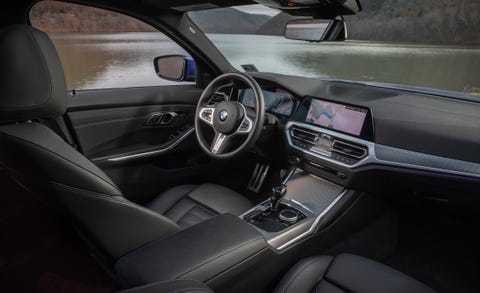
The Bottom Line
Both of these cars have what it takes to make an enthusiast happy. But beyond that they're as different as Chianti and Riesling. The Giulia's sheetmetal is voluptuous, and its personality is friendly, engaging, and accessible in a fun-spirited kind of way. The BMW, by comparison, is a steely-eyed athlete, hungry to devour a piece of road—any road—with cool, unflappable detachment. It's all business. And yet, the better back-road car also is the better everyday transportation device, offering more room, superior comfort, nicer furnishings, and more cargo space—and yes, for a significantly higher price. But, in this case, you get what you pay for.
In this comparison, the BMW 330i, to paraphrase David E., does the better job of successfully bridging the gap between the diametrically opposed automotive requirements of fun and practicality—between wanting a sports car and needing a sedan. The BMW 330i is the better answer to the enthusiast's dilemma.
Specifications
2019 BMW 330i
VEHICLE TYPE
front-engine, rear-wheel-drive, 5-passenger, 4-door sedan
PRICE AS TESTED
$59,220 (base price: $41,245)
ENGINE TYPE
turbocharged and intercooled DOHC 16-valve inline-4, aluminum block and head, direct fuel injection
Displacement
122 cu in, 1998 cc
Power
255 hp @ 6500 rpm
Torque
295 lb-ft @ 1550 rpm
TRANSMISSION
8-speed automatic
CHASSIS
Suspension (F/R): struts/multilink
Brakes (F/R): 13.7-in vented disc/13.6-in vented disc
Tires: Michelin Pilot Sport 4S, F: 225/40R-19 93Y ★ R: 255/35R-19 96Y ★
DIMENSIONS
Wheelbase: 112.2 in
Length: 185.7 in
Width: 71.9 in
Height: 56.8 in
Passenger volume: 95 cu ft
Trunk volume: 17 cu ft
Curb weight: 3683 lb
C/D
TEST RESULTS
Rollout, 1 ft: 0.3 sec
60 mph: 5.1 sec
100 mph: 13.8 sec
120 mph: 21.4 sec
Rolling start, 5–60 mph: 6.5 sec
Top gear, 30–50 mph: 3.2 sec
Top gear, 50–70 mph: 3.9 sec
¼-mile: 13.8 sec @ 100 mph
Top speed (governor limited, mfr's claim): 155 mph
Braking, 70–0 mph: 151 ft
Roadholding, 300-ft-dia skidpad: 0.99 g
C/D
FUEL ECONOMY
Observed: 24 mpg
75-mph highway driving: 42 mpg
Highway range: 650 miles
EPA FUEL ECONOMY
Combined/city/highway: 30/26/36 mpg
2019 Alfa Romeo Giulia Q2 Ti Sport
VEHICLE TYPE
front-engine, rear-wheel-drive, 5-passenger, 4-door sedan
PRICE AS TESTED
$52,990 (base price: $44,740)
ENGINE TYPE
turbocharged and intercooled SOHC 16-valve inline-4, aluminum block and head, direct fuel injection
Displacement
122 cu in, 1993 cc
Power
280 hp @ 5200 rpm
Torque
306 lb-ft @ 2000 rpm
TRANSMISSION
8-speed automatic
CHASSIS
Suspension (F/R): multilink/multilink
Brakes (F/R): 13.0-in vented disc/12.6-in vented disc
Tires: Pirelli P Zero Run Flat, F: 225/40R-19 89W AR R: 255/35R-19 92W AR
DIMENSIONS
Wheelbase: 110.9 in
Length: 182.8 in
Width: 73.2 in
Height: 56.5 in
Passenger volume: 94 cu ft
Trunk volume: 13 cu ft
Curb weight: 3627 lb
C/D
TEST RESULTS
Rollout, 1 ft: 0.3 sec
60 mph: 4.6 sec
100 mph: 12.2 sec
120 mph: 18.9 sec
Rolling start, 5–60 mph: 5.9 sec
Top gear, 30–50 mph: 3.4 sec
Top gear, 50–70 mph: 3.8 sec
¼-mile: 13.3 sec @ 104 mph
Top speed (governor limited, mfr's claim): 149 mph
Braking, 70–0 mph: 159 ft
Roadholding, 300-ft-dia skidpad: 0.93 g
C/D
FUEL ECONOMY
Observed: 22 mpg
75-mph highway driving: 32 mpg
Highway range: 480 miles
EPA FUEL ECONOMY
Combined/city/highway: 27/24/33 mpg
